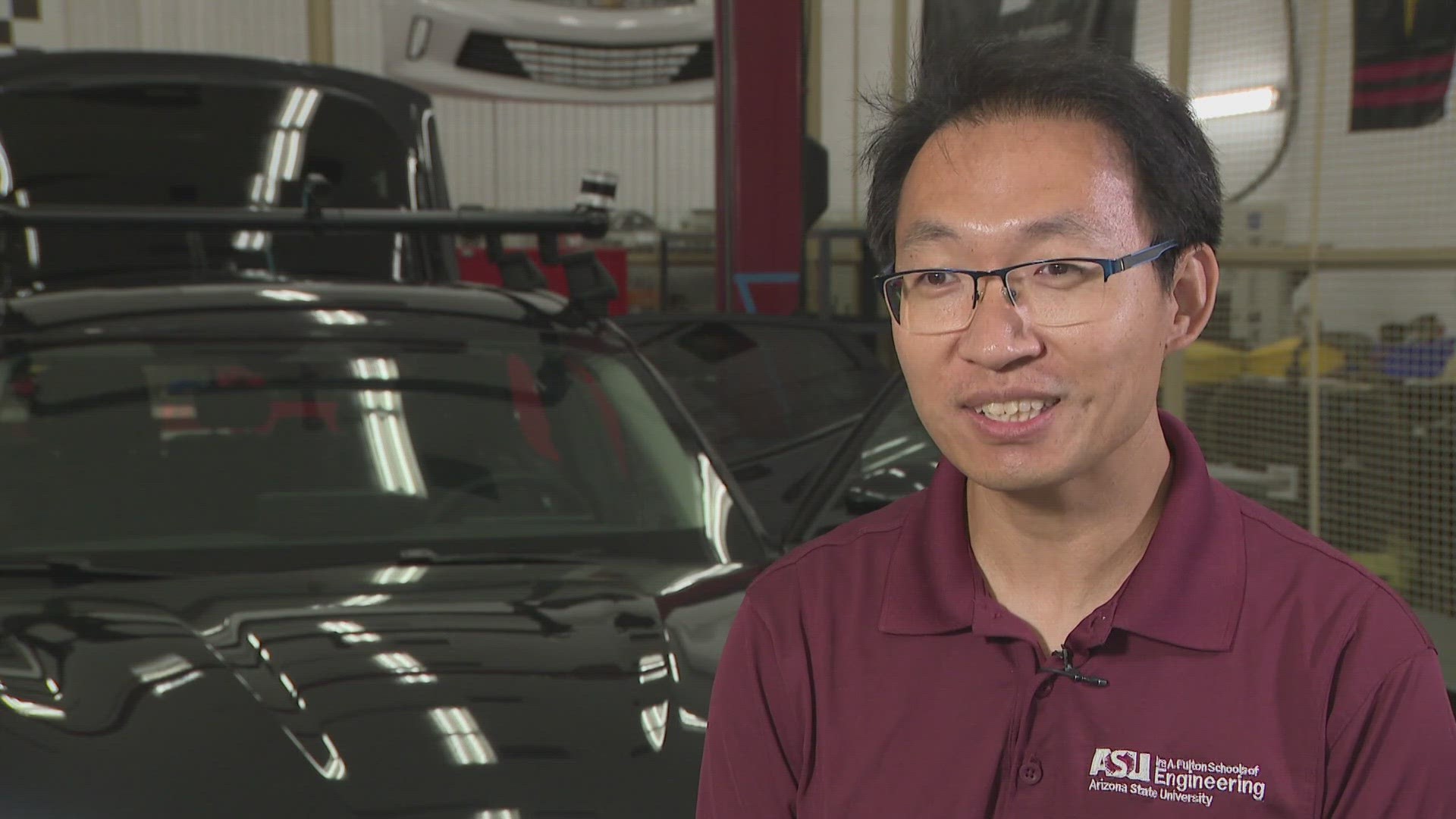PHOENIX — Driving around the ASU Polytechnic Campus is a black car, complete with all the self-driving bells, whistles and Junfeng Zhao, Ph.D., as the safety driver.
“It needs a very complex safety test - framework to make sure all the parts are working together properly and safely,” Zhao said as the vehicle maneuvered through campus without his aid.
At one point, the car slowed as it approached a roundabout, and proceeded to go through recognizing it was clear to do so.
“Autonomous vehicle technology needs to be a part of the solution of car accidents, not part of the problem,” said Zhao, an assistant professor with ASU’s Ira A. Fulton Schools of Engineering.
In the first autonomous vehicle crash death in 2018, an NTSB report found Uber’s self-driving car couldn’t decide what a woman was as she was walking her bike across Mill Avenue in Tempe.
The safety driver wasn’t paying attention, and neither the driver nor the car stopped before hitting and killing the woman.
No state or federal regulations existed then and still don’t.
“It’s a very challenging task,” Zhao said.
The task of developing a framework for regulations is what Zhao is working to accomplish through a pilot study.
The idea is to essentially create a driver’s test for self-driving vehicles.
When drivers test for their license, they’re not tested on every scenario on the roads, but certain ones to test the driver's safety behind the wheel.
Zhao is seeking to find test scenarios that autonomous vehicles will have to maneuver to verify their functionality and safety.
“How does the vehicle perceive the environment? Does it have a reasonable amount of information extracted from the environment? Right? How does the vehicle process that information? Right? And make a prediction and make a decision? How does the vehicle control itself? Drive in a reasonable way: smooth and safe? So very similar to testing out human drivers,” Zhao said.
Zhao believes that an independent framework to evaluate the safety of autonomous vehicles could help strengthen the public's trust in the technology.
“I think the safety aspect of autonomous driving is the paramount concern for this technology to be successful,” Zhao said.
Beyond trust, Zhao hopes that the research will lead state and federal agencies to adopt the framework into regulations and ultimately help self-driving cars save lives.
“I'm still very confident that this technology can bring positive impact to the society, if it is properly regulated, and developed, with some with responsibility,” Zhao said.

